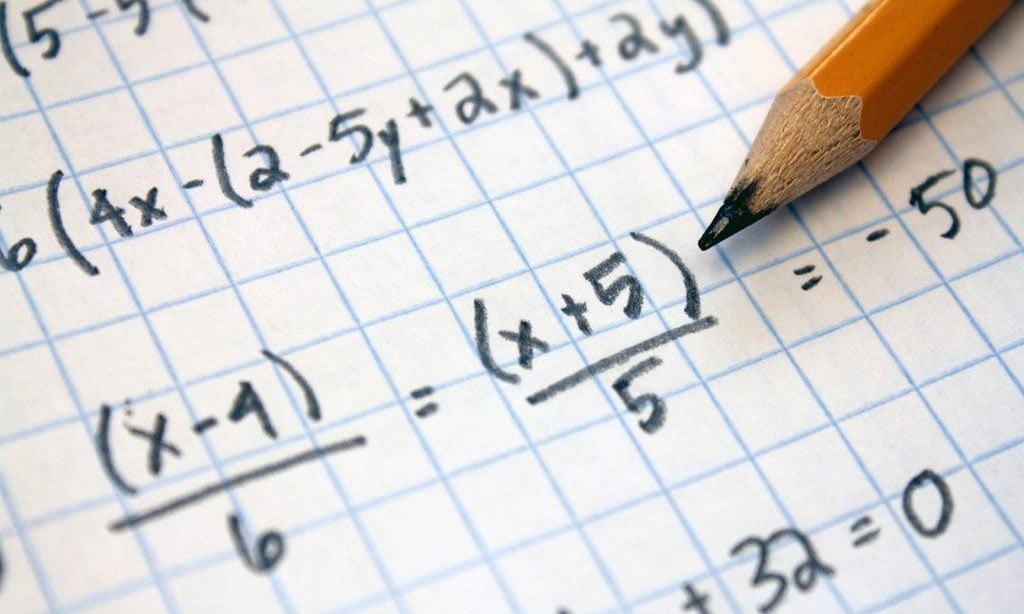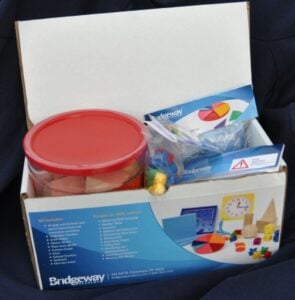Ah, mathematics. I excelled in language arts, not fractions. It was a definite struggle to learn math concepts with just worksheets (The train schedule problems were the WORST.). There are only so many ways to multiply fractions on black-and-white pieces of paper. It can get frustrating, especially if your child is a kinesthetic or “hands-on” learner. Homeschool math lessons don’t have to be monotonous. Here are our top three ways to make homeschool math more fun!
Choose hands-on homeschool math curriculum.
Go beyond the worksheets to curriculum that brings out the “doer” in your child. A great example is Math-U-See! This unique curriculum is organized by skills, not grade levels. Your student will need to master a concept before moving on to the next concept using videos, manipulatives, and more. We recommend taking the Readiness Assessment to see which course would be best for your child. Which leads me to our second way to make math more hands-on: use manipulatives.
Use manipulatives.
Math can be difficult for the kinesthetic learner, especially if it’s just a boring worksheet with no end in sight. Enter manipulatives, where concepts become reality through hands-on play. What are manipulatives? Glad you asked! They come in all shapes and sizes (literally), and help kids think critically. From blocks to teddy bear counters, these activities are both fun and valuable learning experiences.
Bridgeway Academy has the perfect manipulative package for your elementary learner: the Discovery Math Kit. Designed for two grade sets, K-1 and 2-3, these kits include a 47-page activity book, Unifix cubes, and more. The kit focuses on math skills such as number sense, determining place value, and telling time. Best of all, you can supplement any curriculum with the Discovery Math Kit. It’s perfect for the hands-on child in your life!
Engage the body.
When you think of math, the last image that comes to mind is active movement. But it’s simply not true; there are plenty of ways to engage the body in homeschool math. A benefit of movement is that your child can work out their energy while learning math concepts. Hands-on learners need the movement to focus their minds on the task at hand. The ideas below will give you a start on how to approach math while engaging the body.
- Math games are a wonderful way to add a physical element to math learning. From rolling and counting dice, to hopscotch addition, to playing “Multiplication Math War” with playing cards, there’s something for all learners!
- Escape rooms are all the rage now. You’ve seen your Facebook friends participate in these games. Now, you can create an escape room based completely on math problems! This activity is great for any age. Lock ’em up in a room, and in order to “escape,” they must solve all the math problems in a certain amount of time. You’ll be surprised how engaged they will be, especially if the reward is freshly-baked chocolate chip cookies!
- Ready … set … let’s (math) race! Your little kinesthetic learner will love stomping on flashcards, but there’s a catch: they must answer correctly to advance to the next flashcard. Get creative with your path. Place them around the kitchen table (or if you’re so inclined, under it!), into the laundry room, and outside (if the weather’s nice). This game also pairs (no pun intended) nicely with siblings! Who can’t resist a little competition? Check out the instructions here for more information.
Homeschool math isn’t boring!
So, put down the worksheet and pick up the fun! Taking math to the next level for your kinesthetic learner needn’t be a hassle. With the right curriculum, some fun math “toys” and games, and lots of movement, your hands-on learner will be begging for more math in no time. Even better, we think you’ll have more fun teaching, too. And when we are engaged in teaching, learning and laughter follow.








